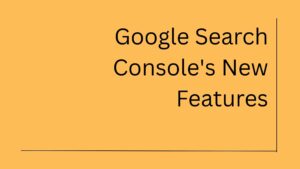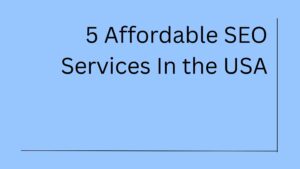When you think about marketing plans, you might picture those thick documents filled with charts and projections. But here’s the thing, marketing plans come in different types, shapes, and sizes. Some are simple one-page documents. Others are comprehensive strategies that span months of planning.
The truth is, there’s no universal approach to marketing planning. Your business needs will determine what type of plan works best for you.
Maybe you’re launching a new product. Perhaps you want to increase brand awareness. Or you might be trying to break into a new market. Each situation calls for a different kind of marketing plan.
In the history of commerce, many businesses have struggled because they picked the wrong type of plan for their situation. A startup trying to use an enterprise-level marketing strategy? That rarely works out well.
Let’s explore the five main types of marketing plans and when you should use each one.
Top 5 Best Curated Marketing Plans for Businesses of all Sizes
1. Digital Marketing Plans: Your Online Blueprint
Digital marketing plans focus entirely on online channels. These plans have become essential for most businesses today, though experts would argue they’re not always the complete solution some people claim they are.
A digital marketing plan typically covers:
- Search engine optimization (SEO) strategies
- Social media marketing across different platforms
- Email marketing campaigns and automation
- Content marketing through blogs, videos, and podcasts
- Pay-per-click advertising on Google, Facebook, and other platforms
- Website optimization and user experience improvements
The beauty of digital marketing plans lies in their measurability. You can track almost everything. Click-through rates, conversion rates, engagement metrics, the data is right there.
But here’s where it gets interesting. Digital marketing plans work best when you have clear goals and realistic budgets. Many have watched companies throw money at Facebook ads without understanding their target audience. The results were, well, predictable.
Example:
An e-commerce clothing brand might create a digital marketing plan that includes:
- Instagram campaigns targeting fashion enthusiasts aged 18-35
- Email sequences for abandoned cart recovery
- Google Ads for specific product categories
- Influencer partnerships for seasonal collections
The key is integration. Your SEO efforts should support your social media strategy. Your email campaigns should align with your content marketing. Everything should work together, though achieving this coordination is harder than it sounds.
2. Product Launch Marketing Plans: Making a Splash
Product launch plans are specialized marketing strategies designed around introducing something new to the market. These plans are time-sensitive and goal-specific.
You need a product launch plan when you’re introducing:
- A completely new product or service
- An upgraded version of an existing offering
- Your business entering a new market segment
- A rebranding effort that changes how customers see you
Product launch plans have unique characteristics. They build anticipation before the launch, create excitement during the launch, and maintain momentum after the initial release.
The timeline matters enormously here. Launch too early and you might not have enough buzz. Launch too late and you risk missing market opportunities. Getting the timing right requires careful planning and perhaps a bit of luck.
Key components include:
- Pre-launch awareness campaigns
- Launch day promotional activities
- Post-launch follow-up strategies
- Media outreach and PR coordination
- Customer feedback collection systems
Example:
A software company launching a project management tool might plan:
- Beta testing with selected customers three months before launch
- Content marketing about productivity challenges leading up to release
- Launch week with special pricing and demos
- Follow-up campaigns targeting users who downloaded but haven’t purchased
The challenge with product launch plans is managing expectations. Sometimes launches exceed projections. Other times they fall short despite excellent planning.
3. Brand Awareness Marketing Plans: Getting Noticed
Brand awareness plans focus on one primary goal: making more people know your brand exists. These plans are particularly important for newer businesses or companies entering competitive markets.
Brand awareness marketing is different from direct sales marketing. You’re not necessarily trying to get immediate purchases. Instead, you’re building recognition and familiarity.
This type of plan might seem less urgent than others, but it’s foundational. People buy from brands they recognize and trust. Building that recognition takes time and consistent effort.
Brand awareness tactics include:
- Sponsorship of local events or industry conferences
- Content marketing examples that showcase expertise
- Social media presence that reflects brand personality
- Public relations efforts to earn media coverage
- Community involvement and corporate social responsibility
- Consistent visual branding across all touchpoints
The tricky part about brand awareness campaigns is measuring success. Sales metrics don’t tell the whole story. You need to track brand recognition surveys, social media mentions, and website traffic patterns.
Example:
A local accounting firm might develop a brand awareness plan featuring:
- Monthly workshops on tax planning for small businesses
- Regular blog posts about financial management
- Sponsorship of local business networking events
- Professional speaking engagements at industry meetups
Brand awareness plans require patience. The results often appear gradually rather than immediately. This can make them challenging to justify, especially when budgets are tight.
4. Customer Retention Marketing Plans: Keeping What You Have
Customer retention plans focus on maintaining relationships with existing customers. These plans are built on a simple truth: it costs more to acquire new customers than to keep current ones.
Yet many businesses spend most of their marketing budget on acquisition. That might not be the smartest approach, particularly if you’re losing customers at a high rate.
Retention marketing plans address different customer lifecycle stages:
- Onboarding new customers properly
- Engaging customers during quiet periods
- Re-engaging customers who seem to be drifting away
- Rewarding loyal customers for their continued business
- Addressing customer service issues before they become problems
Common retention strategies include:
- Loyalty programs with meaningful rewards
- Regular check-ins and customer satisfaction surveys
- Exclusive offers for existing customers
- Educational content that helps customers get more value
- Personalized communication based on purchase history
- Quick response to customer complaints or concerns
The effectiveness of retention plans depends heavily on understanding why customers leave. Sometimes it’s price, sometimes it’s no loyalty program. Other times, it’s poor service or lack of engagement. Without knowing the real reasons, your retention efforts might miss the mark.
Example:
A subscription box service might implement:
- Welcome packages for new subscribers with usage tips
- Monthly surveys asking for feedback and preferences
- Exclusive early access to new products for long-term subscribers
- Win-back campaigns for customers who canceled their subscriptions
Customer retention plans can feel less exciting than acquisition campaigns. But the ROI is often higher, even if the growth appears slower.
5. Seasonal Marketing Plans: Timing Your Success
Seasonal marketing plans are built around specific times of the year when your business experiences predictable changes in demand. These could be traditional seasons, holidays, or industry-specific cycles.
Many businesses have natural seasonal patterns. Retail sees spikes during holidays. Tax services get busy in early spring. Landscaping companies thrive in summer months.
But seasonal planning isn’t just for obviously seasonal businesses. Almost every company can find seasonal opportunities if it looks carefully enough.
Seasonal plans typically include:
- Preparation phases before peak seasons
- Intensive promotional periods during high-demand times
- Recovery and analysis phases after busy periods
- Off-season strategies to maintain revenue streams
- Inventory and staffing adjustments based on seasonal patterns
The challenge with seasonal marketing is avoiding the feast-or-famine cycle. You don’t want your entire year’s success to be dependent on a few busy months.
Example:
A fitness center might create a seasonal plan featuring:
- January membership drives capitalizing on New Year’s resolutions
- Summer programs focused on “beach body” preparation
- Fall campaigns promoting indoor fitness as weather changes
- Holiday gift certificate promotions in December
Seasonal plans require advance preparation. You can’t wait until December to plan your holiday campaign. The most successful seasonal marketers start planning months ahead.
One thing businesses are noticing is that seasonal plans work best when they feel authentic rather than forced. Customers can tell when you’re just trying to capitalize on a holiday versus genuinely providing seasonal value.
Choosing the Right Marketing Plan for Your Business
With five different types of marketing plans, how do you choose the right one? The answer depends on your current situation and immediate goals.
Ask yourself these questions:
What’s your primary challenge right now? If it’s getting new customers, focus on digital or brand awareness plans. If you’re losing existing customers, prioritize retention strategies.
What’s your timeline? Product launches have fixed deadlines. Brand awareness can be more flexible. Seasonal campaigns must align with calendar dates.
What resources do you have available? Digital plans often require ongoing management. Seasonal plans need intense bursts of activity. Make sure your team can handle the workload.
How do you measure success? Different plans have different success metrics. Choose a plan type that aligns with how you define and measure progress.
Most businesses eventually use multiple types of marketing plans. You might run a digital marketing plan year-round while adding seasonal campaigns and occasional product launches.
The key is starting with one plan type and executing it well rather than trying to do everything at once. Marketing plans only work when you actually implement them consistently.
Conclusion
So what’s the take here? it is important to remember that marketing plans are living documents. They should evolve as your business grows and market conditions change. The plan you create today might look different six months from now, and that’s perfectly fine.
Your marketing plan should work for your business, not against it. Choose the type that fits your current needs, execute it consistently, and adjust based on real results rather than assumptions.
The best marketing plan is the one you’ll actually stick with long enough to see results.

The Chief Editor cum author at Intothecommerce, bringing a unique blend of traditional and digital marketing expertise to the team. I oversee all editorial operations, utilizing my comprehensive knowledge to bridge classic marketing principles with modern digital strategies. My focus ensures our content is both timely and fundamentally sound.





